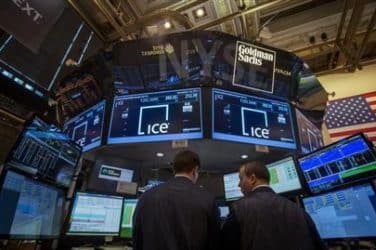
With U.S. regulators bogged down in minutiae of Dodd-Frank, Europe has a chance to catch up.
The regulatory gap between Europe and the United States appears to be narrowing with the EU’s launch of MiFID II and European Market Infrastructure Regulation (EMIR).
While uniformity in regulations is still a ways off, the fears of regulatory arbitrage between North America and Europe are easing somewhat.
“Until all the laws are completely uniform, some degree of regulatory arbitrage will always present” Christian Martin, CEO of TeraExchange, told Markets Media.
“There had been a much greater potential [for regulatory arbitrage] when Dodd-Frank was originally enacted in July 2010, as Europe was very far behind at that point,” said Martin. “But because of delays in the implementation of the Rule in the U.S. coupled with an acceleration of activities around reform in Europe, the gap has grown much smaller. We don’t think this will be a big impact or significant cause for concern when the rules are implemented.”
Like the Dodd-Frank Act, which amends and supplements existing laws such as the Securities Exchange Act and Commodity Exchange Act, the review of MiFID both amends previous provisions already in force and adds to them.
In many areas, such as comprehensive regulation for professional participants in derivative markets and the regulation of alternative trading systems, the changes in MiFID are less significant than those in the U.S., as similar provisions did not exist prior to the Dodd-Frank Act.
In other areas, such as the regulation of commodity derivative markets, U.S. regulation was more developed and the revision of MiFID allows Europe to catch up.
The most visible areas of common ground concern the overhaul of regulation of derivative markets, including commodity derivatives.
Under MiFID II, regulated markets, MTFs, and OTFs (organized trading facilities) that trade commodity derivatives must apply “transparent and non-discriminatory” position limits to support liquidity.
The European Commission will introduce legislation to determine position limits, and Member States may not impose more restrictive limits except in exceptional cases.
Member States will have powers to limit the ability of any person to enter into a commodity derivate by setting position limits or limiting the number of commodity derivative contracts per underlying which any given class of persons may enter into.
The provisions echo those adopted in the United States, where the Commodity Futures Trading Commission has dropped a provision on aggregation of positions which would have allowed a company to disaggregate the positions of an “owned non-financial entity” in which it owns a 10 percent or greater interest provided that it could demonstrate that the futures and swaps positions of the entities are independently managed and controlled (the “Owned Entity Exemption”).
If a fund becomes an owner of ten percent or more of an operating company, then the final rule could be construed as providing that the operating company and their trading personnel may not qualify as an independent account controller, notwithstanding an absence of control over the operating company’s trading activities.
The International Organization of Securities Commissions (IOSCO) has published a report on principles for the regulation and supervision of commodity derivatives markets.
The principles address design of physical commodity derivatives contracts; surveillance of commodity derivatives markets, including monitoring large positions; and enhancing price discovery and transparency, including allowing regulators to impose position limits and the reporting of OTC derivatives to trade repositories.





